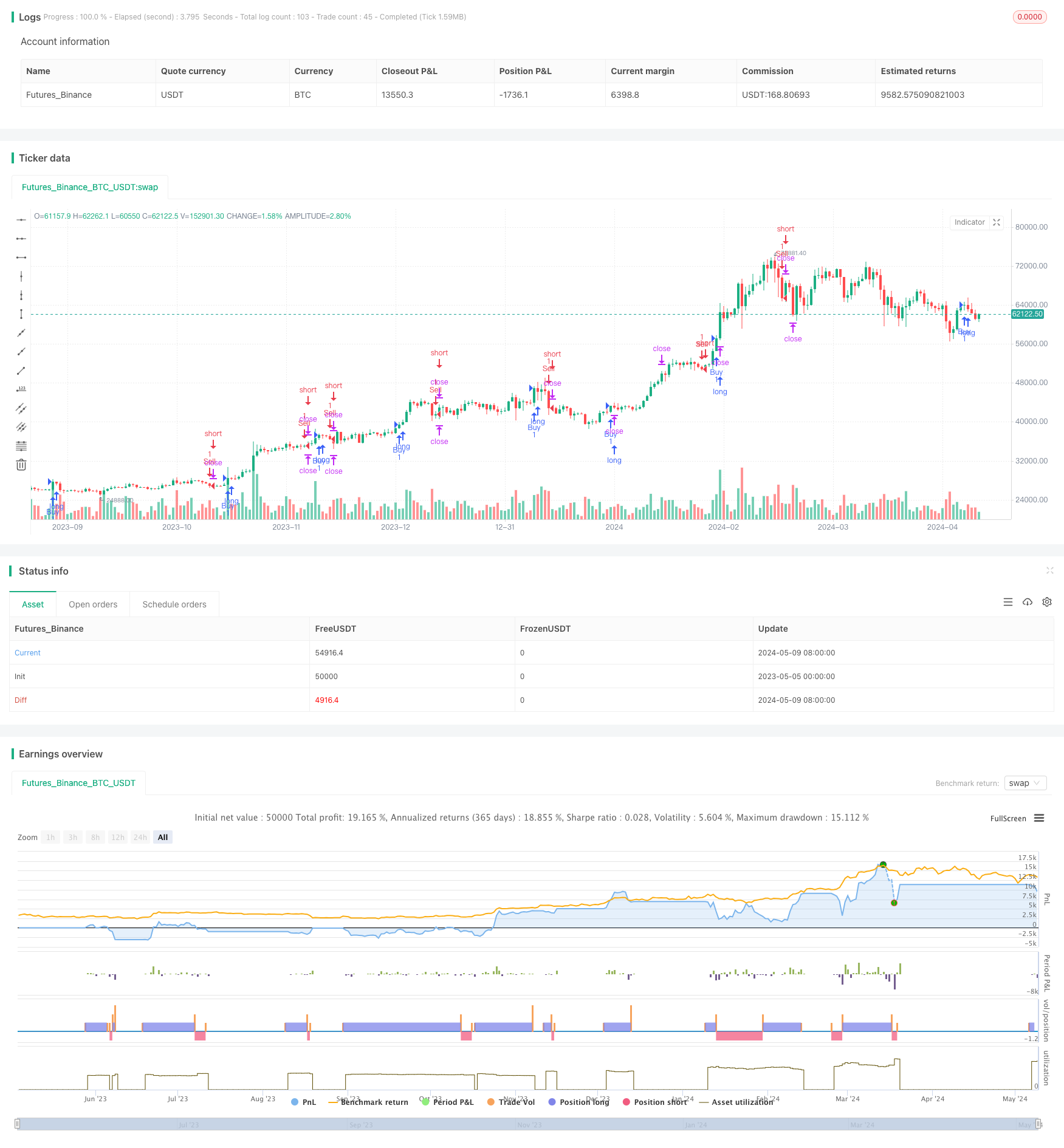
概述
该策略基于MACD指标,利用MACD指标中的MACD线和Signal线的交叉来判断交易信号。当MACD线上穿Signal线时产生做多信号,当MACD线下穿Signal线时产生做空信号。同时使用前一根K线的最低价作为多头止损位,前一根K线的最高价作为空头止损位。止盈位设置为4倍ATR(平均真实波幅)。
策略原理
MACD指标由DIF线和DEA线组成,DIF线是快速均线和慢速均线的差值,DEA线是DIF线的移动平均线。当DIF线上穿DEA线时,表明股价已经脱离超卖区域并开始向上,产生做多信号;当DIF线下穿DEA线时,表明股价已经脱离超买区域并开始向下,产生做空信号。同时,策略使用前一根K线的最低价和最高价分别作为多头止损位和空头止损位,以控制风险。止盈位设置为4倍ATR,以获取更多利润。
优势分析
- MACD指标能够较好地捕捉股价的趋势变化,特别是中长期趋势。
- 止损位的设置能够有效控制风险,避免单笔交易的损失过大。
- 止盈位的设置能够让利润充分扩大,提高策略收益。
- 代码逻辑清晰,容易理解和实现。
风险分析
- MACD指标有滞后性,可能错过最佳建仓时机。
- 止损位的设置相对简单,可能无法应对某些极端行情。
- 止盈位的设置可能导致错过更大的利润空间。
- 缺乏仓位管理,风险控制能力有限。
优化方向
- 可以考虑加入其他指标,如RSI、布林带等,以提高信号准确性。
- 可以优化止损位的设置,如使用ATR或百分比止损,以更好地控制风险。
- 可以优化止盈位的设置,如使用移动止盈或部分止盈,以获取更多利润。
- 可以加入仓位管理,如基于风险比例调整仓位大小,以提高风险控制能力。
总结
该策略基于MACD指标,通过MACD线和Signal线的交叉来判断交易信号,同时使用前一根K线的最低价和最高价作为止损位,止盈位设置为4倍ATR。策略逻辑清晰,容易实现,能够较好地捕捉股价趋势。但是,该策略也存在一些风险,如指标滞后、止损位设置简单等。未来可以考虑加入其他指标、优化止损止盈位设置、加入仓位管理等方面进行优化,以提高策略的稳健性和盈利能力。
策略源码
/*backtest
start: 2023-05-05 00:00:00
end: 2024-05-10 00:00:00
period: 1d
basePeriod: 1h
exchanges: [{"eid":"Futures_Binance","currency":"BTC_USDT"}]
*/
//@version=4
strategy("MACD Strategy", overlay=true)
// Define MACD
[macdLine, signalLine, _] = macd(close, 12, 26, 9)
// Define conditions for long entry
longCondition = crossover(macdLine, signalLine)
// Define conditions for short entry
shortCondition = crossunder(macdLine, signalLine)
// Define stop loss for long entry
longStopLoss = low[1] // Previous candle low
// Define stop loss for short entry
shortStopLoss = high[1] // Previous candle high
// Define take profit for both long and short entries
takeProfit = close + (close - longStopLoss) * 4 // 4 x ATR
// Execute long entry
if (longCondition)
strategy.entry("Buy", strategy.long)
strategy.exit("TP/SL", "Buy", stop=longStopLoss, limit=takeProfit)
// Execute short entry
if (shortCondition)
strategy.entry("Sell", strategy.short)
strategy.exit("TP/SL", "Sell", stop=shortStopLoss, limit=takeProfit)
相关推荐